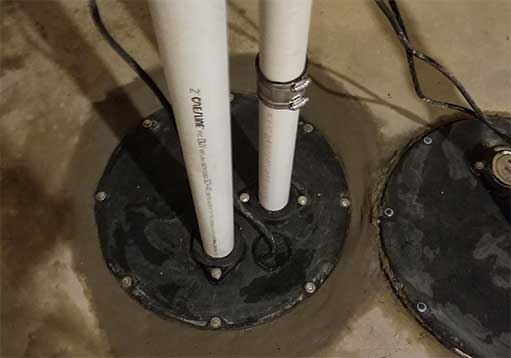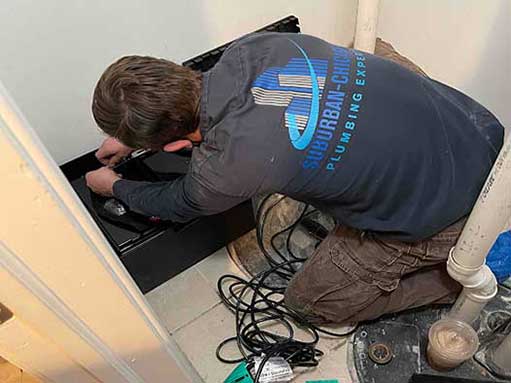
Whether you are a homeowner dealing with a malfunctioning sewage ejector pump or a professional plumber looking for some expert advice, this article aims to provide you with the information you need to diagnose and resolve common issues.
Understanding Sewage Ejector Pumps
Before we dive into troubleshooting tips, let’s briefly understand what sewage ejector pumps are and how they work. Sewage ejector pumps are crucial components of residential and commercial plumbing systems. They are designed to pump wastewater from lower levels, such as basements or crawlspace, to higher levels where gravity drainage is not possible.
These pumps are typically installed in special pits called sewage basins and are equipped with a float switch that activates the pump when the wastewater reaches a certain level. Once activated, the pump propels the wastewater through a discharge pipe and into the main sewer line.
Common Problems and Solutions
1. Pump Not Turning On
If your sewage ejector pump is not turning on, there are a few potential causes:
- Check the power supply: Ensure that the pump is properly plugged in and the circuit breaker or fuse is not tripped.
- Inspect the float switch: Make sure the float switch is functioning correctly. Sometimes debris or float arm misalignment can prevent the switch from activating the pump.
- Test the pump motor: Using a multimeter, check if the pump motor is receiving power. If not, there may be an issue with the wiring or the pump motor itself.
If none of these solutions resolve the problem, it is advisable to contact a professional plumber for further assistance.
2. Continuous Running
If your sewage ejector pump runs continuously and doesn’t shut off, consider the following troubleshooting steps:
- Check the float switch: Ensure that the float switch is not stuck in the “on” position. Sometimes debris or obstructions can prevent the switch from disconnecting the power supply to the pump.
- Inspect the check valve: A malfunctioning check valve can cause continuous cycling of the pump. Check if the valve is stuck or damaged, and replace it if necessary.
- Examine the discharge pipe: If the discharge pipe is clogged or obstructed, it can create backpressure, causing the pump to run continuously. Clear any blockages in the discharge pipe.
If the problem persists, it is recommended to call on a professional plumber for further investigation.
3. Pump Not Pumping Sufficiently
If your sewage ejector pump is running, but the wastewater is not being pumped out effectively, consider the following troubleshooting steps:
- Check for clogs: Inspect the intake ports and impeller for any clogs or obstructions. Use a flashlight to get a clear view and remove any debris if necessary.
- Inspect the check valve: A faulty or damaged check valve can prevent proper wastewater discharge. Ensure that the valve is functioning correctly and replace it if needed.
- Verify the pump size: Make sure that the pump is adequately sized for your specific needs. An undersized pump may not have enough power to effectively pump wastewater.
If none of these steps resolve the issue, it is advisable to seek professional help to avoid further damage to the pump or plumbing system.

Maintenance and Prevention
Prevention is always better than cure, and the same applies to sewage ejector pump problems. Here are some maintenance tips to keep your pump in top condition:
1. Regular Cleaning
Periodically inspect and clean the pump, float switch, and intake ports to remove any accumulated debris or sediments. This will help prevent clogs and ensure smooth operation.
2. Test the Float Switch
Regularly test the float switch to ensure it is activating the pump at the correct water level. You can do this by pouring water into the sewage basin and observing if the pump turns on and off as expected.
3. Check Valve Inspection
Inspect the check valve periodically to ensure it is functioning properly and not causing any backflow issues. Replace the valve if it shows signs of damage or wear.
4. Professional Inspection
Consider scheduling a professional inspection of your sewage ejector pump and plumbing system annually. A professional plumber can identify any potential issues early on and take preventive measures to avoid major problems and avoid a premature sewage ejector pump replacement.
Troubleshooting sewage ejector pump problems can be a challenging task, but with the right knowledge and guidance, you can identify and resolve common issues effectively. Remember to prioritize safety, and if you are unsure or unable to troubleshoot the problem on your own, do not hesitate to seek professional assistance. By following proper maintenance practices, you can prolong the life of your sewage ejector pump and ensure optimal performance for many years to come.

